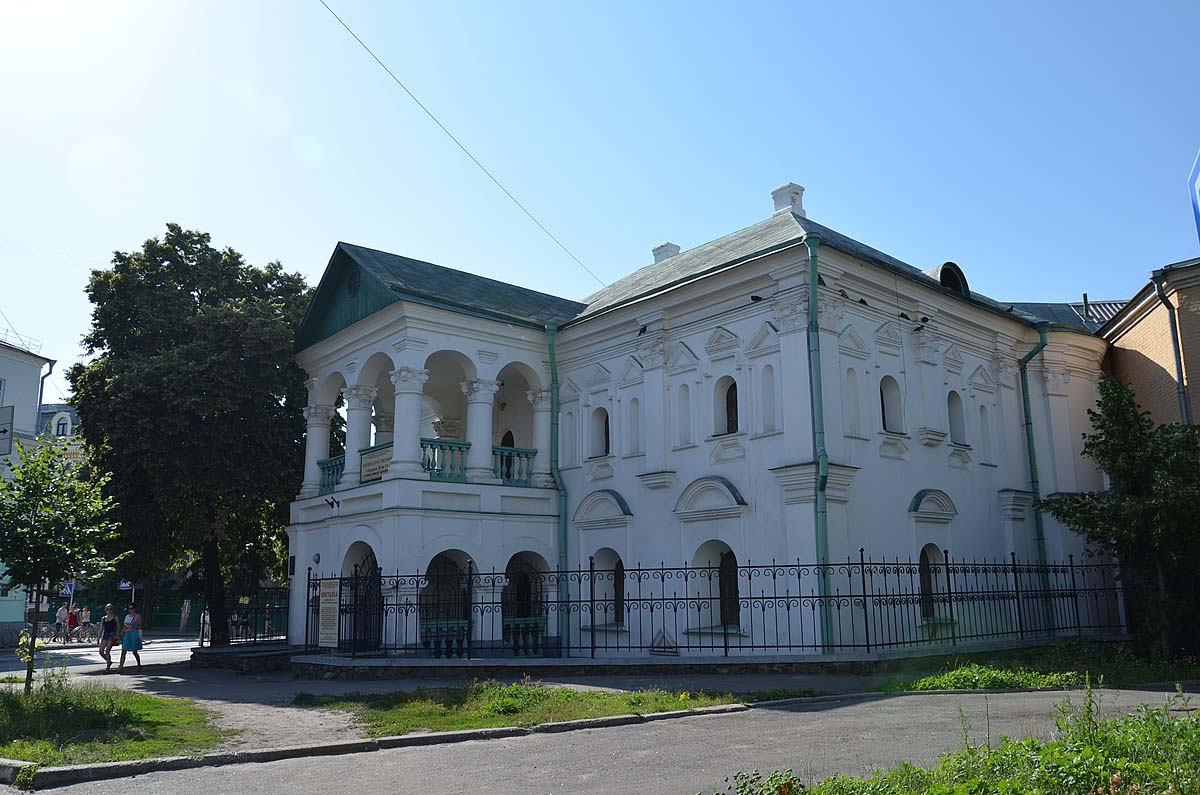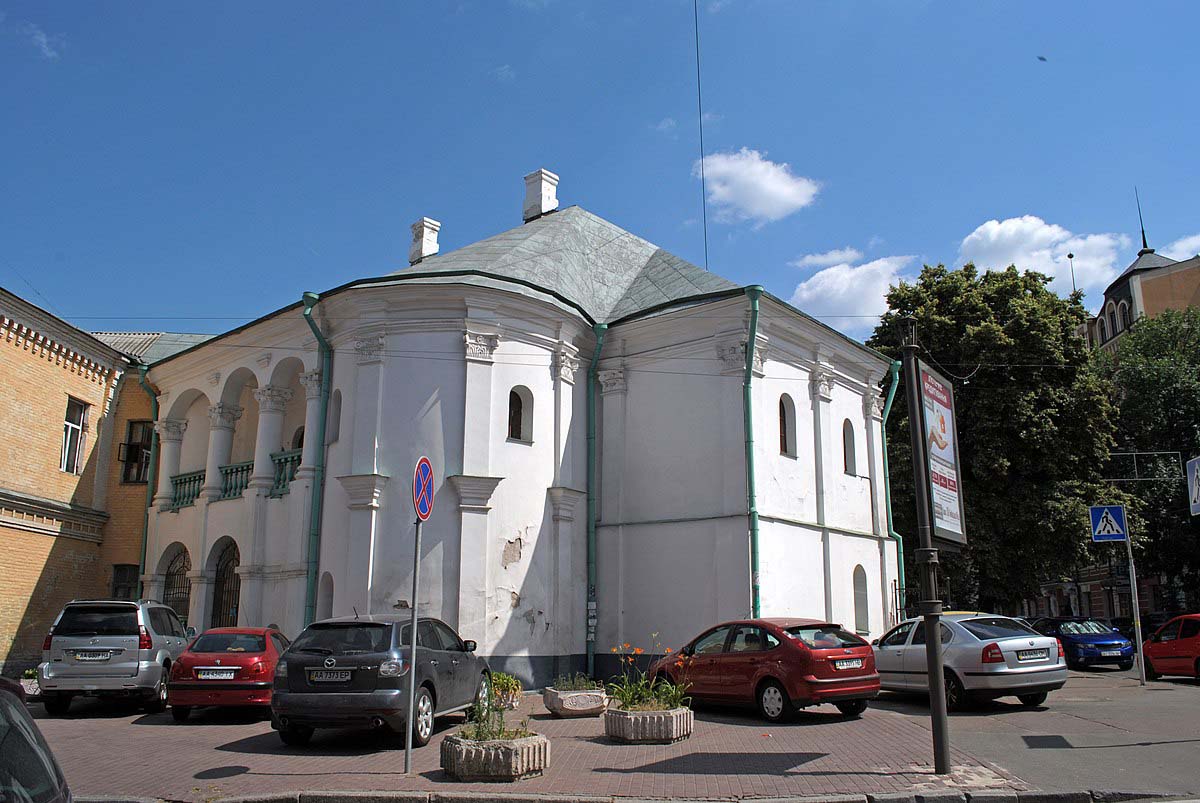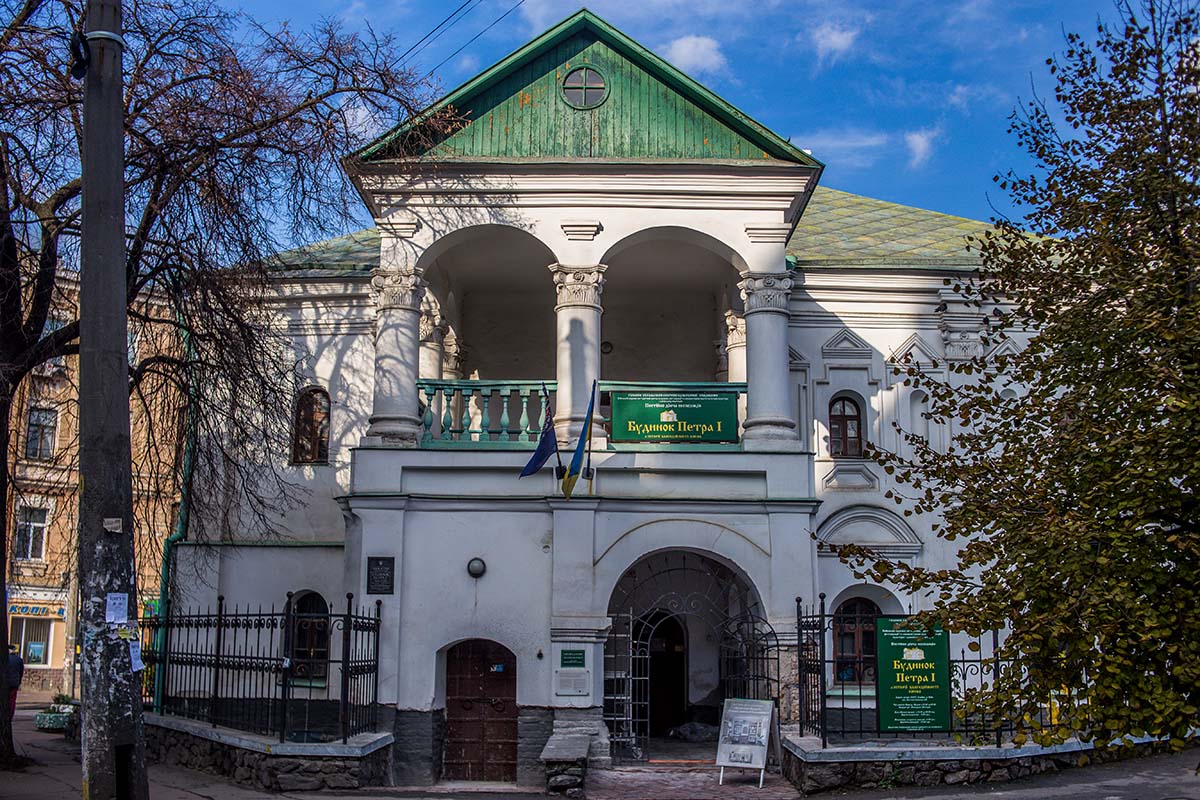The popular name of this building as “the house of Peter the Great” is nothing more than an urban legend. According to unconfirmed reports, Russian Tsar Peter the Great lived in this house during his visit to Kyiv in 1706. At that time, the building belonged to Hetman Ivan Mazepa, who personally received the Tsar. But Ukrainian historians do not recognize the fact that the king was in this house.
There is no exact information about when the house of Peter the Great was built. It was probably built at the end of the 17th – beginning of the 18th century, during the period of active stone construction in Kyiv, in an estate that since 1663 belonged to the Bykovsky merchant family. The owner of the estate, Jan Bykovsky, the city mayor in 1687–1699, owned many courtyards, shops, a pond with a mill, and lands along the Glubochitsa River and on Mount Shchekavitsa in Podil. Initially, the house in the Bykovsky estate was 2-storey, L-shaped in plan, with a basement and 2 round tower-like external volumes. All rooms of the structure were covered with vaults. In the early 1730s, Bykovsky’s grandson began rebuilding the building into 10 rooms, but in 1734 he was appointed commander of a military unit in the Poltava region and he left, leaving the house unfinished.
The reconstruction of the house was completed by the architect Ivan Grigorovich-Barsky (Pokrovskaya Church, reconstruction Church of the Virgin Pirogoshhi) by order of the Kyiv magistrate, who in the 1780s bought all the property of the Bykovskys. As a result of the reconstruction, a two-story extension was made from the western side of the building, and open arcades in Baroque forms were installed between the towers and on the entrance risalit from the south. After the renovation was completed, in 1791, by decision of the magistrate, the so-called “straithouse” was placed in the former Bykovsky house – a place for isolating drunkards and rowdy people, as well as the insane.
In 1803, the madhouse was transferred to a hospital and over the next years the building stood empty. The house suffered significant damage during a fire in Podol in 1811: its consequences were eliminated only after new repairs and reconstruction in 1817-1820. After this, the building was given over to the Podolsk parish school, which existed here until the end of the 1860s. Since the late 1870s, the building housed barracks, and in 1883 it was transferred to the Aleksandrovsky orphanage, which operated here until 1917. After the revolutionary events of 1917-1921, the building functioned as a residential building. In the mid-1970s, the building was thoroughly restored and in 1978 transferred to the balance of the Kyiv History Museum.
In 2007, the building was renovated at the expense of the city budget and a museum of the history of charity was placed in it. The premises in the museum were furnished with typical 19th-century furniture, some of which was purchased from collectors, and some of which was taken from the funds of the state historical and architectural reserve “Ancient Kyiv”. The museum’s exposition is dedicated to the history of the construction of the Bykovsky estate, the patronage of representatives of the spiritual and imperial authorities and various forms of official and civil charity in Kyiv during the Russian Empire. Among the most valuable exhibits are the icon “The Mother of God with the Child in Her Arms” with almost completely preserved Baroque sculpture from the 18th century and the book “Lives of the Saints” from 1762. The exhibition also contains a large collection of photographs and documents from the 19th century, telling about the life of Kiev residents in those days.
Where is the Bykovsky estate (the house of Peter the Great)?
Konstantinovskaya street, 6/8
Wed-Sun: 11:00 – 19:00, Mon, Tue: closed
(044) 545-63-12


